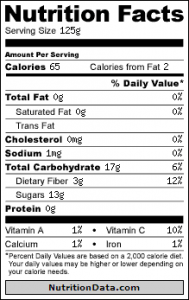FDA updates Nutrition Facts
FDA Proposes Updates to “Nutrition Facts” Label on Packaged Foods
The Food and Drug Administration is proposing to update the “Nutrition Facts” label for packaged foods to reflect new public health and scientific information, update serving size requirements to better align with how much people really eat, and highlight key elements such as calories and serving sizes. The proposed changes would affect all packaged foods except certain meat, poultry and processed egg products, which are regulated by the Department of Agriculture’s Food Safety and Inspection Service. Comments on the FDA proposal are due no later than June 2.
An FDA press release states that changes being proposed to the “Nutrition Facts” label include the following.
– requiring information about a food product’s added sugars, based on expert recommendations that Americans should reduce their intake of calories from added sugar
– updating reference amounts used by manufacturers to determine serving sizes so that they reflect the amounts people currently eat and drink, which has changed since the serving sizes were first put in place in 1994
– presenting dual column labels to indicate both “per serving” and “per package” calorie and nutrition information for larger packages that could be consumed in one sitting or in multiple sittings
– requiring the declaration of potassium and vitamin D (if present) because some segments of the U.S. population are not consuming adequate amounts (calcium and iron would continue to be required, if present, but listing vitamins A and C would now be voluntary)
– revising the daily values for a variety of nutrients such as calcium, dietary fiber and vitamin D
– removing “calories from fat” because research shows the type of fat (e.g., saturated fat or trans fat, which would continue to be required) is more important than the amount
– refreshing the format to emphasize certain elements, such as calories, serving sizes and percent daily value, that are important in addressing current public health problems like obesity and heart disease

